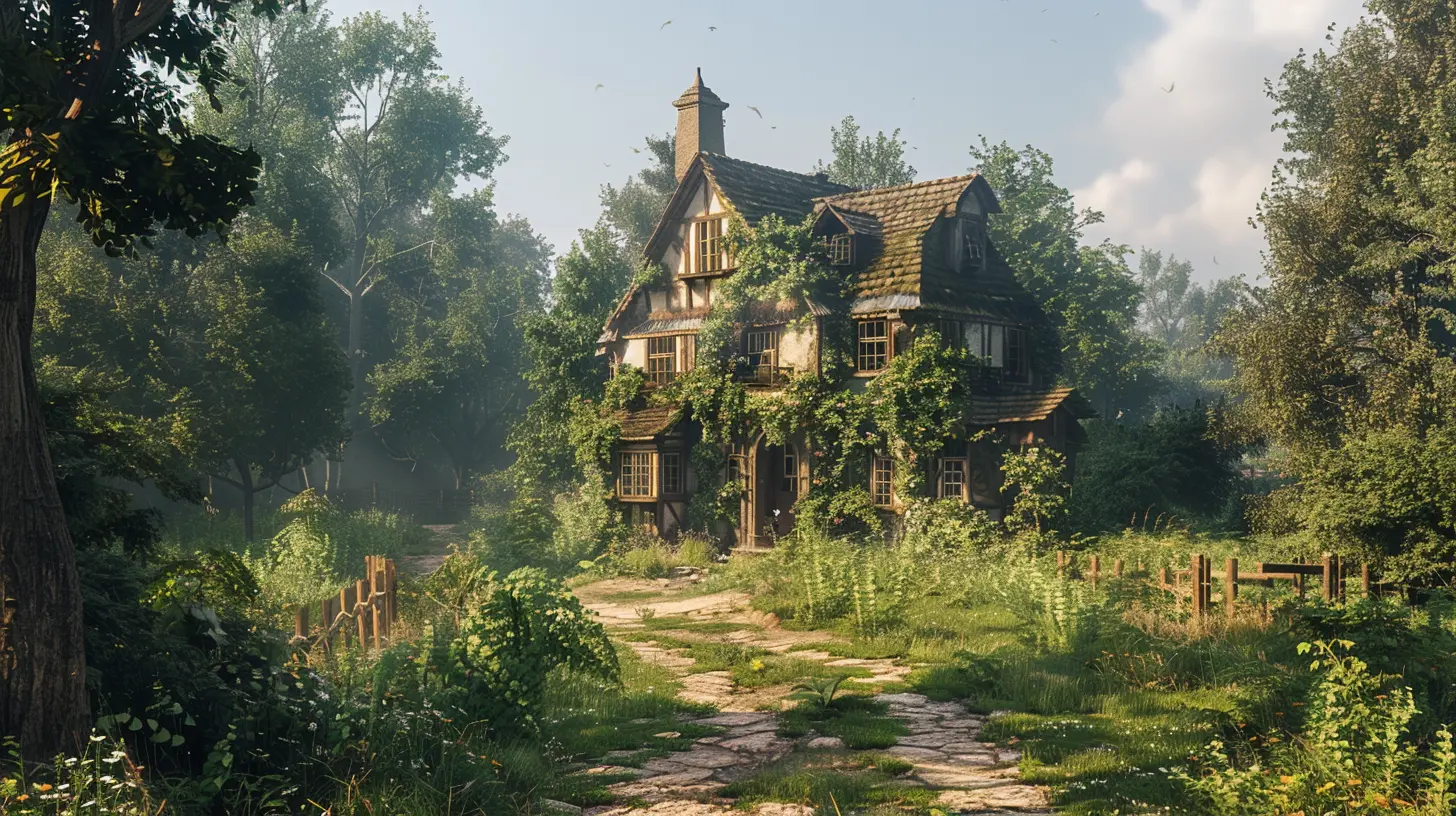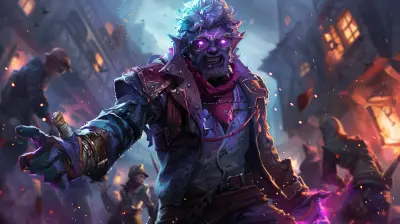The Role of Narrative Branching in Creating Replayable Games
6 August 2025
When it comes to video games, there’s no denying that the story plays a significant role in engaging players. But beyond just captivating storytelling, one of the best ways developers keep us coming back for more is through narrative branching. If you’re reading this, chances are you’ve replayed a game at least once just to see what would happen if you made a different choice. And guess what? That’s the magic of narrative branching at work.
So, what’s the big deal with narrative branching? Why does it feel like every choice-based game pulls us in deeper than we expected? Let’s break it down and talk about how this game design element creates not just memorable stories but also adds insane replayability to games. 
What Is Narrative Branching, Anyway?
Let’s start with the basics. Imagine you're playing a game, and at a pivotal moment, the game presents you with choices that could significantly impact the storyline. Do you save the village under attack, or do you rush to rescue your best friend in peril? Whatever you choose, the story forks into a new path—this is narrative branching in action.Instead of a single, linear storyline, narrative branching lets the story split into multiple directions based on player decisions. Think of it like a “choose-your-own-adventure” book, except way more immersive because, well, it’s a video game.
The beauty of this mechanic is that it flips the script (sometimes literally). You're not just playing a game—you’re influencing its outcome. Your choices matter, and that makes the experience feel uniquely yours. 
Replayability: Why It Matters
Let’s be real for a second—games aren’t cheap. When we spend money on a title, we want to feel like we’re getting our money’s worth. And sure, a 20-hour campaign might sound like a solid deal at first. But what if, instead of just one story, the game offers multiple possible outcomes based on the choices you make? Boom! Suddenly, you’re looking at dozens (if not hundreds) of hours of potential gameplay.That’s where narrative branching shines. Games with branching paths give us a reason to hit “New Game” the second those credits roll. Why did your best friend betray you? What would’ve happened if you didn’t side with that sketchy merchant? Would the romance subplot have worked out if you’d played your cards differently? These are the kinds of questions that keep us coming back. 
How Narrative Branching Works: The Game Dev Side
Before we get into why narrative branching is so compelling, let’s take a quick peek behind the curtain at how it works. Game developers don’t just toss random choices at players and hope they stick. It’s actually an intricate dance of storytelling, design, and coding.Here are some key elements that go into designing branching narratives:
1. Decision Trees
Think of a decision tree as the game’s backbone. Each choice a player makes leads to a new branch, and that branch splits further depending on subsequent decisions. For example, in The Witcher 3: Wild Hunt, Geralt’s actions (or inaction) directly shape major events in the game.2. Player Agency
This one’s a big deal. Narrative branching is only as good as the sense of agency it provides to the player. If your choices don’t feel impactful, the whole system can fall flat. It’s all about making players believe their decisions matter. Games like Detroit: Become Human nail this by showing you the consequences of your choices in real time.3. Concrete Endings
What’s the point of branching narratives if they all lead to the same ending? That’s like driving on different roads only to end up at the same dead-end. Good narrative branching gives you distinct conclusions. Whether they’re happy, tragic, or somewhere in between, each ending should feel earned.
Why We Love Narrative Branching in Games
Alright, so we’ve covered how narrative branching works, but why do we love it so much? Honestly, it taps into something super primal—the need to feel in control.Games like Mass Effect, Life is Strange, and Until Dawn succeed because they let us step into the shoes of the protagonist and decide how the story unfolds. But there’s more to it than just control. Let’s dive into the juicy details.
1. It Makes the Story Feel Personal
Ever played a game where you got so attached to a character or an outcome that you found yourself thinking about it days after you finished? That’s narrative branching doing its thing. When you drive the story’s direction, the stakes feel higher, and the experience feels tailored to you.2. Curiosity Kills (and Revives) the Cat
You know that itch to go back and choose the opposite of what you picked the first time? That’s curiosity, and games with strong branching narratives exploit it perfectly. What if I’d chosen the other dialogue option? This question alone has fueled countless second (and third) playthroughs.3. The Butterfly Effect
There’s something so fascinating about watching small choices snowball into major consequences. It’s like a domino effect, except instead of toppling pieces, you’re toppling entire story arcs. Games like Until Dawn take this concept to heart, letting players see how one small decision early on can drastically alter the ending.4. Moral Dilemmas
Good narrative branching makes you question what kind of person you are—or what kind of person you want to be. Do you do the “right” thing, even if it costs you? Or do you take the selfish route for an easier ride? These moral dilemmas force us to think critically and emotionally, making the experience unforgettable.Not All Branching Narratives Are Created Equal
Here’s the thing, though: while branching narratives are awesome, not every game executes them well. Some fall into the trap of offering “fake choices” where no matter what you pick, the outcome is the same. That’s a quick way to kill immersion and break the player’s trust.And let’s not forget pacing. If every choice leads to a wildly different outcome, it can sometimes feel overwhelming. Developers have to walk a fine line between giving players freedom and keeping the story manageable.
The Future of Narrative Branching
With advancements in technology, the potential for branching narratives is massive. AI is already starting to play a role in games, offering dynamic dialogue systems that react to players in real time. Imagine a future where every choice you make leads to an entirely unique storyline, crafted on the spot by artificial intelligence. Mind-blowing, right?Even now, indie developers are pushing the boundaries of what’s possible with narrative branching. Games like Disco Elysium and Undertale prove that you don’t need a AAA budget to craft compelling, replayable stories.
Games That Nailed Narrative Branching
If you’re itching to experience some of the best branching narratives out there, here are a few recommendations:- The Witcher 3: Wild Hunt: Masterclass in moral ambiguity and storytelling.
- Mass Effect Series: Your choices literally shape the galaxy.
- Life is Strange: Emotionally charged storylines with real consequences.
- Until Dawn: Perfectly blends horror with the butterfly effect.
- Disco Elysium: A role-playing masterpiece dripping with player agency.
Final Thoughts
At the end of the day, narrative branching isn’t just a clever gimmick—it’s a storytelling tool that keeps us hooked, invested, and coming back for more. It’s what turns a “good” game into a “great” game, giving us an experience that evolves with every decision we make. If you’ve ever thrown yourself into a second (or third) playthrough just to explore “what could’ve been,” you’ve already felt the power of narrative branching.So, next time you’re playing a game and find yourself agonizing over a choice, remember: it’s not just a game mechanic—it’s your story.
all images in this post were generated using AI tools
Category:
Game DevelopmentAuthor:

Greyson McVeigh
Discussion
rate this article
1 comments
Flora Carter
Imagine a game where every choice sends your character on a wild goose chase through spaghetti forests and dancing llamas! Narrative branching isn’t just replayable; it’s a fantastic rollercoaster that even leaves room for a banana peel slip!" 🎢🍌
September 10, 2025 at 2:21 PM

Greyson McVeigh
Absolutely! That whimsical imagery perfectly captures how narrative branching can transform gameplay into a unique adventure, offering endless surprises and delightful moments. 🎉


